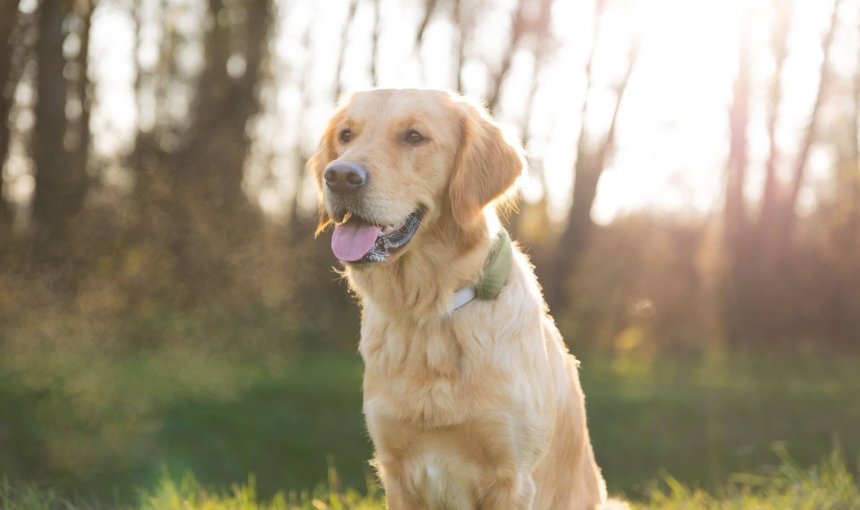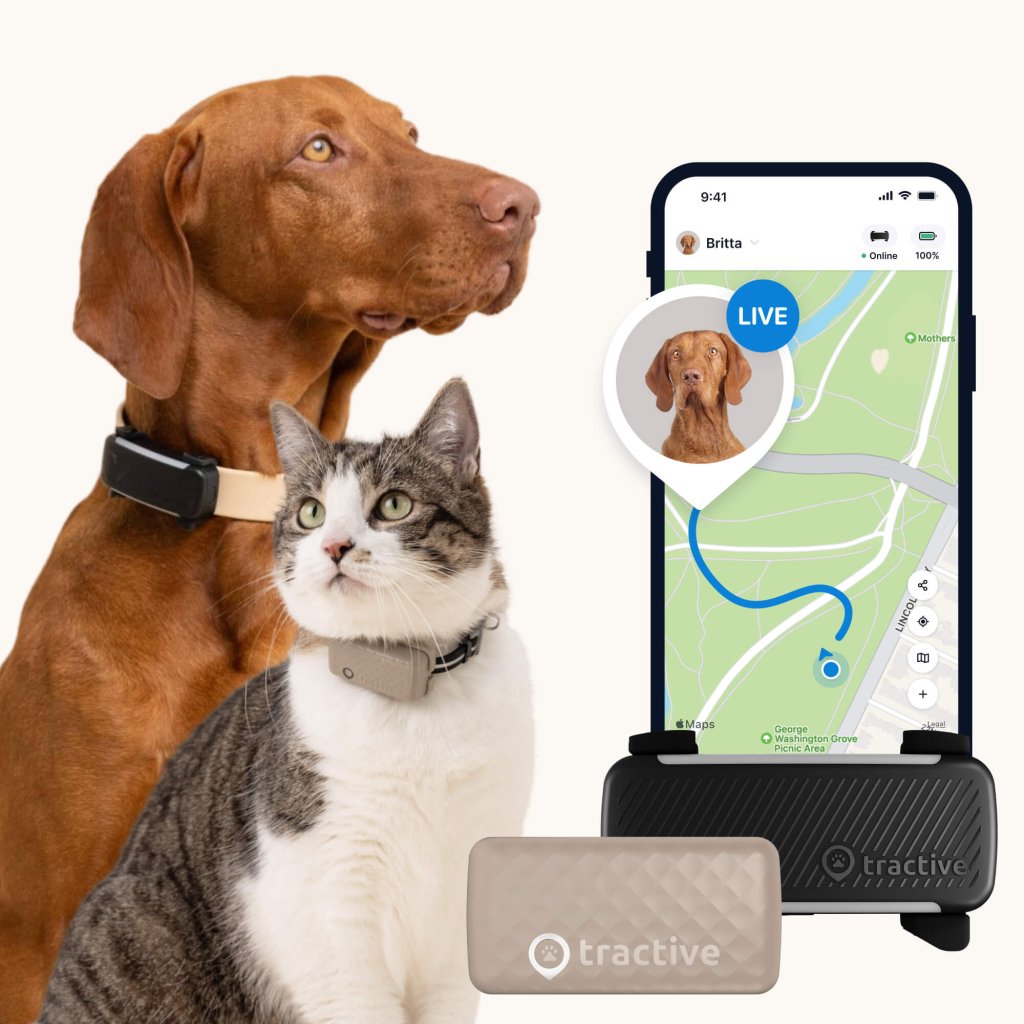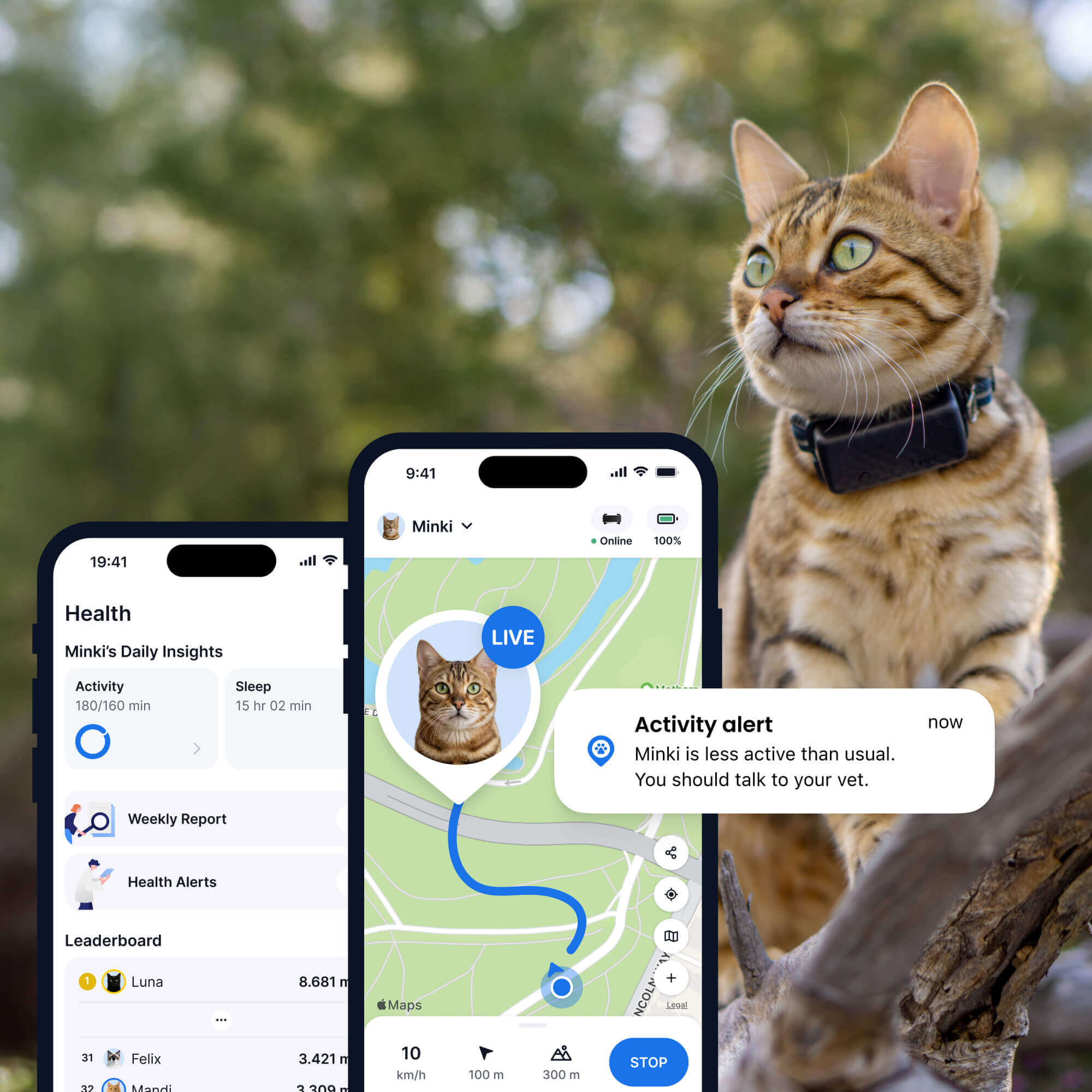World Animal Day: Celebrating Our Animal Friends
World Animal Day both celebrates the beauty and diversity of the animal world - and also highlights the challenges and threats it faces. Here are some of the reasons why it’s such an important day on the international calendar - and the role you can play in it.

You’re more likely to connect October with spooky season, fall leaves, and pumpkin spice – but it also includes one of the most inspiring days of the year. On October 4th, we’re celebrating World Animal Day! It’s an international event dedicated to raising awareness about animal welfare and advocating for their rights.

Always know your buddy is healthy & safe
Read moreWorld Animal Day: How it started
In the 1920s, a German-Jewish cynologist Heinrich Zimmerman, organized the first World Animal Day event in Berlin. With over 5000 people attending, Zimmerman had planned to host the event at the Sport Palace on October 4th. But the venue wouldn’t be available around that time for the next six years! After years of struggle, he succeeded when the 1931 International Animal Protection Congress in Italy unanimously accepted October 4th as World Animal Day.
Why is World Animal Day celebrated on October 4th?
If you’re based in the Netherlands, you might think of October 4th as Valentine’s Day or Mother’s Day. But there’s a reason why Zimmerman was so insistent on this date specifically. It’s because October 4th is also the feast day of Saint Francis of Assisi, the patron saint of animals and the environment. Saint Francis is renowned for his deep love and respect for all living beings. And Zimmerman was intent on continuing this legacy.
Since the 1900s, World Animal Day has grown into a global movement. As of 2003, the event is coordinated by UK-based animal welfare charity Naturewatch Foundation.1 And most importantly, people of all backgrounds can come together to make the world a little kinder for animals.
Why World Animal Day matters
It helps raise awareness
World Animal Day calls on people around the world to stand up for animals around the world. It’s often easy to miss out on signs of neglect and abuse, especially when it comes to animals. Many pets, whether exotic or local, might be kept in poor conditions, underfed, and even mistreated. But much like other forms of abuse, these signs can remain hidden until it’s too late.
For example:
- Dogs, cats, horses, and livestock are some of the most commonly abused animals.2 But because livestock animals aren’t strongly protected by laws in the US, these cases of abuse are rarely ever reported. (Or even prosecuted.)
- According to the ASPCA, more than 6.3 million pets enter animal shelters in the US every year.3 Which can lead to overcrowding and neglect.
- The Intergovernmental Science-Policy Platform on Biodiversity and Ecosystem Services (IPBES) reports that close to 1 million animal and plant species face the threat of extinction.4
Around the world, animals face challenges like habitat loss, poaching, cruelty, and exploitation. But while these facts might sound scary, there’s still hope:
It’s not too late to make a difference – but only if we start now at every level from local to global. Through transformative change, nature can still be conserved, restored, and used sustainably.
Sir Robert Watson, IPBES Chair
It promotes compassion
A common misconception many of us don’t question is that animals are “things” – not sentient beings. But multiple studies show evidence that they’re perfectly capable of experiencing emotions, much like humans.5 Which include pleasure, pain, joy, and distress.
So on World Animal Day, the conversation centers around developing a more compassionate and humane approach to animals. Because if they can feel as we do, it makes sense to advocate for their welfare.
- Octopi, squids, crabs, and even lobsters are capable of experiencing pain and fear.6 In fact, their brain structures are even similar to those of mammals – like us.
- About to squash that spider in your toilet? Even insects are capable of a range of cognitive abilities, including emotions like stress and even pessimism.7
- Reptiles might be cold-blooded – but only in a literal sense. They’re perfectly capable of feeling anxious, excited, frustrated, and stressed.8 The same applies to amphibians like frogs and toads.9
- Multiple studies have shown that fish are capable of experiencing emotions like stress, anxiety, and fear.10
So it’s not just dogs and cats who are emotionally intelligent and capable of experiencing complex emotions. Rather, on World Animal Day, global efforts focus on raising awareness and compassion for all animal species – both in the wild and close to home. And since they’re sentient beings like us, animals are as deserving of our respect and protection as any other.
On a hopeful note, as of 2019, around 32 countries in the world have recognized that animals are sentient beings. These include a number of European countries, the UK, Canada, Australia, New Zealand, and Chile.

Keep your pets healthy & safe
Get real-time location information, wherever they go. See how much – or how little – activity they’re getting. And get Health Alerts if something might be wrong.
It advocates for animal rights
World Animal Day provides a platform for animal rights organizations around the world to call for stronger legal protections. Because if animal cruelty is punishable by law, it’s more likely that these cases might decrease with time. As a result, animal welfare groups push for changes in laws, policies, and practices that harm animals.
- In 2009, Bolivia outlawed the violent treatment of animals in circuses.11
- The US is the only country in the world where the killing of horses for consumption is a crime.12
- Some countries like Nepal and India criminalize animal abuse on religious grounds.
- Many countries around the world have completely banned electric collars for dogs which use static shocks to train them.
It highlights conservation efforts
World Animal Day casts a spotlight on conservation efforts around the world. Different animal rights groups are fighting to protect endangered species who face violence and the threat of extinction and poaching at the hands of humans. And while there’s still a long way to go, we’ve also been able to make a tremendous positive difference.
Here are a couple of wildlife conservation success stories from the past decades:
- In the US, the ban on harmful pesticides led to a growth of the bald eagle population from endangered to an estimated 316,7000 in the wild.13
- Tiger populations have tripled in India and Bhutan. Rampant poaching and habitat loss led to fewer than 2000 tigers in the wild in 1970s India. But with conservation efforts, their numbers have grown to an average of 3682 in the wild.14
- 25 years of conservation efforts have led to African mountain gorillas growing from 620 individuals in the 1990s to 1063 this year.15
The road to protecting animal rights is a long one. But with small steps, we can go a long way together. So here are a couple of ways you can contribute to World Animal Day and make a difference.
How you can make a difference on World Animal Day
World Animal Day isn’t just a day to observe – it’s about taking action. In your own small way, you can contribute to the welfare of animals around the world. Here are a couple of ways to get involved and show your support.
Support your local animal shelter or welfare organization
Local animal shelters and rescue organizations benefit tremendously from volunteers and donations to care for animals in need. Volunteering your time and skills can help you take an active role in animal welfare. So whether it’s at a shelter, a rehabilitation center, or even your local zoo – your efforts can go a long way.
Pet shelters are often at risk of overcrowding due to neglect and abandoned pets. So if you’re considering volunteering at an animal shelter, you could always adopt a pet from there – and give them a loving forever home. With this, you can set a good example for responsible pet ownership.
Besides local shelters, we’d also recommend you educate yourself about wildlife conservation efforts in your area. You could always support organizations involved in protecting endangered species and their habitats. (Whether through a donation or volunteering your services.) Consider making a trip to a wildlife sanctuary near you and get informed on how you can promote ecotourism and more responsible interactions with animals.
Consider participating in an animal welfare advocacy group
It’s the small, steady actions of many people that can make all the difference. And being a part of a group can help you feel more connected and motivated to make the world a better place for animals. Consider getting in touch with a local animal welfare group and participating in their advocacy efforts. Sign petitions that support legislative changes and call for better treatment of animals.
You could also join or support international organizations like World Animal Protection, the Humane Society, Greenpeace, or the World Wildlife Fund (WWF).
Promote responsible pet ownership & welfare
If you already have pets, give them some extra love this special day – ensure you’re giving them the best possible care and always put their health and wellbeing first. This includes proper nutrition, regular vet checkups, and an enriched, loving environment.
You could also take a more active role in ensuring your pets’ health and wellbeing. For example, Tractive’s Wellness Monitoring helps you keep track of how much exercise and quality sleep your dog or cat might be getting. You can also get Health Alerts which notify you if their sleep is being constantly disturbed – or if they’re less active than usual. Which, in the case of Tractive pet parents around the world, can help you avoid a medical emergency.
Reduce your environmental footprint however you can
Involving yourself in animal welfare efforts means involving yourself with the wider impact our actions have on the environment. You can contribute by taking small steps to adopt a more sustainable lifestyle.
- Do your best to reduce, reuse, recycle, and properly segregate household waste.
- Be extra mindful of how much electricity and water you use per day. For example, you could try and avoid brushing your teeth with the water running.
- Consider expanding your diet and including fewer meat sources. You could always experiment with some flavorful vegan or vegetarian recipes that provide all the nutritional benefits you need to stay healthy.
- Support sustainably-sourced products, including clothing.
- Leave driving for longer distances when necessary. For shorter distances, consider using public transportation instead.
Environmental groups around the world have succeeded in small, significant ways to get their governments to actively reduce emissions and their carbon footprint.16 So on this World Animal Day, you could join a community of active, engaged, environmentally-conscious people around the world who are doing their part to make a positive difference.
Take action & make a difference this World Animal Day
World Animal Day highlights both the beauty and importance of animals in our lives – and recognizes the tremendous challenges they also face. It reminds us that we all have a role to play in protecting the incredible diversity of life on our planet.
So whether you choose to spread awareness, donate, volunteer, adopt from your local animal shelter, or take steps to track your pets’ health and wellbeing – your actions can make a tremendous positive impact. By working together, we can create a world where animals are treated with kindness and respect every day – not just today.




